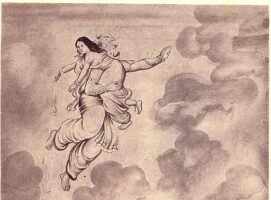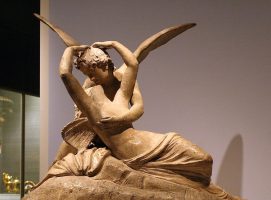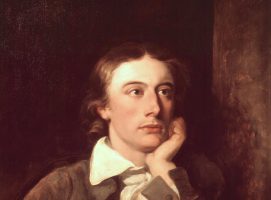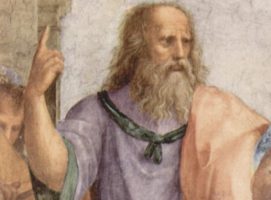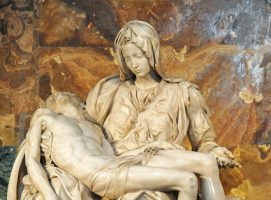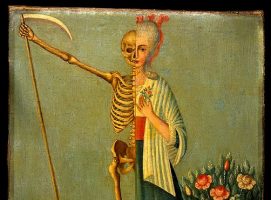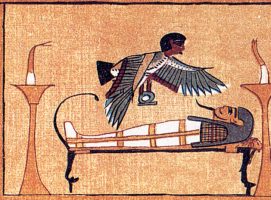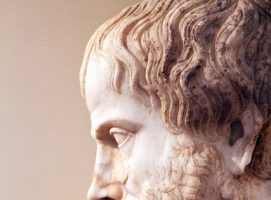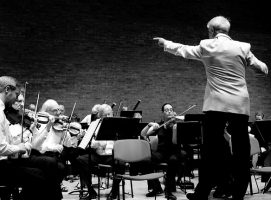Showing 17 articles
Heroic Symbols of the Feminine: The Myth of Eros and Psyche
Author:January 26, 2023
In this article I will look at the archetypal hero’s journey with particular reference to its feminine aspect and symbolism. Symbols resonate on all levels of nature, meaning that feminine does not refer only to gender or biology (although there might be some relevant keys) but rather the understanding that the feminine is a principle [...]For Your Soul to Grow
Author: Jorge Angel LivragaJanuary 3, 2022
I am not referring to your Divine Spirit which, because it is so, can neither grow nor diminish, be born nor die, but to that higher part in us which we commonly call Soul. It is common knowledge that physical exercise, for example, develops muscles, and that any learning must be based on tenacity in [...]John Keats: Immortal Beauty
Author: Maria Virginia ReinaOctober 1, 2020
“A thing of beauty is a joy forever. Its loveliness increases; it will never pass into nothingness” So begins the epic poem Endymion by John Keats. And in these opening lines, as through his exquisite body of work, he presents to us one of the core themes of his poetry, if not all art: that [...]The Magical Function of Rituals and Ceremonies
Author: Julian ScottOctober 1, 2020
From an esoteric point of view, a ritual is dependent on the existence of the invisible dimension. This invisible dimension consists of a spiritual-mental aspect, which is the domain of the archetypes or ‘living idea-beings’ spoken of by the Platonists; and an ‘astral’ aspect, which is an intermediate world between spirit and matter, just as [...]Plato’s Esoteric Teachings
Author: Julian ScottApril 17, 2020
Plato is typically thought of as a ‘respectable’ Greek philosopher who is widely taught at reputable universities around the world and admired for his original philosophical thinking. However, there is another side to Plato which is only explored by a minority of scholars, starting with Heinrich Gomperz in the 1930s and continuing with the ‘Tübingen [...]Bill Viola / Michelangelo: Life, Death, Rebirth
Author: Miha KosirMay 26, 2019
What is life, what is death, is there a rebirth? These are the big questions arising with the first spark of self-awareness. But what are the answers? A recent exhibition at the Royal Academy of Arts entitled Bill Viola / Michelangelo: Life, Death, Rebirth displayed some of the finest drawings by versatile renaissance artist Michelangelo [...]The Constitution of the Human Being in the Eastern Tradition
Author: Agostino DominiciMay 1, 2017
In a previous article, I introduced the topic of the esoteric constitution of man and I looked at the Western tradition. In this article, I will look at the same topic but from the perspective of the Eastern tradition. I will introduce some of the Sufi, Hindu and Taoist classifications of man’s spiritual constituents. Before [...]A New Philosophy of Life and Death
Author: Julian ScottApril 17, 2017
Life and death, like all opposites, are simply two sides of the same coin. As J.A. Livraga says in his book Thebes, in reality there is “only One Life, which glides along on its two feet, life and death.” Sometimes life is manifest, visible. At other times it is unmanifest, invisible. A tangible image of [...]The constitution of the human being in the Western tradition
Author: Agostino DominiciFebruary 7, 2017
From time immemorial, human beings have asked themselves the question ‘who am I?’ And philosophers, theologians and metaphysicians have all come up with different answers. The classification of the various human ‘constituents’, from one system of thought to another might have changed, but the underlying principles in question have remained the same. Thus, even though [...]Aristotle – the Ethics of Happiness
Author: Julian ScottFebruary 7, 2017
One of Aristotle’s most famous works is his Nicomachean Ethics, so called because the work was edited by Aristotle’s son Nicomachus. It is a curious fact that none of Aristotle’s surviving works were directly written by him. They are all compilations from his lecture notes, edited by his various students. This accounts for their often [...]Mozart and Freemasonry
Author: Julian ScottMay 13, 2016
Though some people are aware that Mozart was a Freemason and many know that his opera The Magic Flute is a Masonic allegory, it is less well known what Freemasonry is and how central it was to Mozart’s life and work. According to the great Mozartean scholar Alfred Einstein, however, “the consciousness of his membership [...]